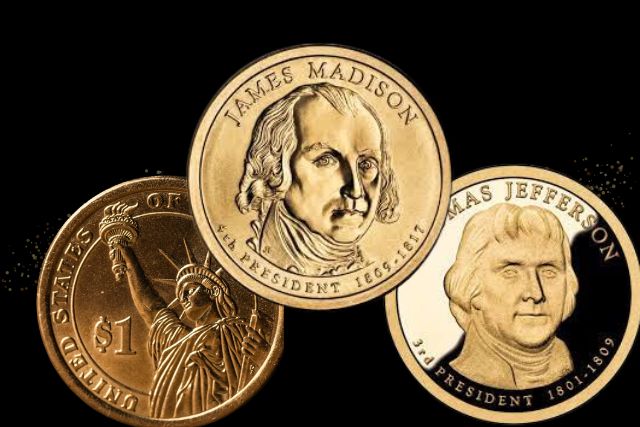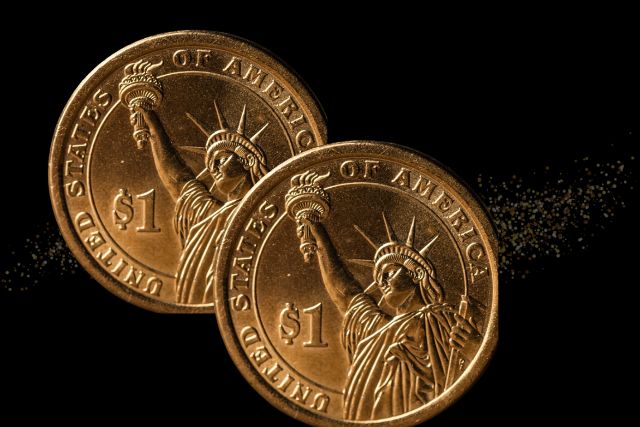Welcome to this comprehensive article on the one dollar coin! In this in-depth exploration, we will delve into the rich history, design variations, and cultural significance of this fascinating currency. The one dollar coin has captured the imaginations of collectors and numismatists alike, and its unique characteristics make it a treasured piece of American heritage. Join us on this captivating journey as we uncover the secrets and stories behind the one dollar coin.
One Dollar Coin: A Brief Overview
Before we dive into the intricate details of the one dollar coin, let’s start with a brief introduction to this intriguing currency. The one dollar coin is a denomination of currency that holds significant historical and monetary value. It has been minted by the United States Mint since the late 18th century and has undergone various design changes over the years. With its distinctive appearance and notable symbolism, the one dollar coin stands as a testament to the nation’s past and its enduring spirit.
The Evolution of the One Dollar Coin
From Bust to Liberty: The Early Years
In the late 18th century, the United States Mint began producing one dollar coins with a design featuring a bust of Lady Liberty on the obverse and an eagle on the reverse. These early coins, commonly known as the “Bust Dollar” series, were a symbol of the young nation’s aspirations and newfound independence. With their elegant design and historical significance, these coins have become highly sought after by collectors and history enthusiasts.
The Advent of the Morgan Dollar
In 1878, the United States Mint introduced the iconic Morgan Dollar, named after its designer, George T. Morgan. This coin featured a profile of Lady Liberty on the obverse and a majestic eagle on the reverse. The Morgan Dollar quickly gained popularity and became synonymous with the Wild West and the economic boom of the late 19th and early 20th centuries. Its intricate design and substantial silver content make it a prized possession among collectors.
The Peace Dollar: A Symbol of Hope
Following the conclusion of World War I, the United States Mint released the Peace Dollar in 1921. This coin was created to commemorate the peaceful resolution of the global conflict and symbolize a new era of hope and prosperity. The Peace Dollar features a serene profile of Lady Liberty on the obverse and a majestic eagle perched on a mountain on the reverse. Today, this coin serves as a reminder of the nation’s resilience in the face of adversity.
The Sacagawea Dollar: Celebrating Cultural Heritage
In 2000, the United States Mint introduced the Sacagawea Dollar, honoring the contributions of Native American cultures to American history. This coin features a portrait of Sacagawea, a Shoshone woman who played a vital role as an interpreter and guide during the Lewis and Clark expedition. The Sacagawea Dollar showcases the rich diversity of the United States and celebrates the achievements of individuals who shaped the nation.
The Presidential Dollar Series: Commemorating Great Leaders

Beginning in 2007, the United States Mint embarked on the Presidential Dollar series, an initiative to honor each of the nation’s former presidents. These coins feature a portrait of a different president on the obverse, with a depiction of the Statue of Liberty on the reverse. The Presidential Dollar series offers a unique opportunity to learn about the influential leaders who have shaped the history of the United States.
Collecting and Investing in One Dollar Coins
The Thrill of Collecting
Collecting one dollar coins can be an exciting and rewarding hobby. As you immerse yourself in the world of numismatics, you’ll discover a vast array of coins, each with its own story to tell. Whether you’re a seasoned collector or just starting, the one dollar coin offers a captivating journey through American history.
Factors Affecting Coin Value
When considering the value of a one dollar coin, several factors come into play. These include the coin’s condition, rarity, historical significance, and overall demand among collectors. Coins in pristine condition and those with unique characteristics or limited mintages tend to command higher prices in the market.
Tips for Starting Your Collection
If you’re considering starting a collection of one dollar coins, here are a few tips to help you get started:
- Research and Educate Yourself: Familiarize yourself with the various series, mintages, and key dates of one dollar coins. This knowledge will guide you in making informed decisions and identifying valuable pieces.
- Build a Diverse Collection: Aim to collect coins from different series and time periods. This will add depth and variety to your collection and allow you to appreciate the evolution of one dollar coin designs.
- Consider Coin Grading: Coin grading is the process of assessing a coin’s condition. It is advisable to invest in coins that have been professionally graded by reputable grading services. Graded coins offer assurance regarding their authenticity and condition.
- Connect with Fellow Collectors: Joining numismatic societies and participating in online forums or local coin clubs can provide valuable insights and opportunities to connect with like-minded collectors. Sharing knowledge and experiences with others in the hobby can enhance your enjoyment and expand your network.
Investing in One Dollar Coins
In addition to being collectible items, certain one dollar coins can serve as investment assets. The value of rare and sought-after coins has historically appreciated over time, making them a potential store of value. However, it is important to note that investing in coins requires careful research, market analysis, and a long-term perspective. If you are considering investing in one dollar coins, consulting with a numismatic expert or financial advisor is recommended.
Conclusion
The one dollar coin is more than just a means of currency—it is a tangible piece of history, artistry, and cultural significance. From the early Bust Dollars to the iconic Morgan and Peace Dollars, and the modern Sacagawea and Presidential Dollar series, each coin tells a unique story and embodies the spirit of a nation. Whether you are a collector, an investor, or simply intrigued by the allure of these coins, exploring the world of one dollar coins is an enriching and captivating endeavor.
So, why not embark on this journey? Discover the beauty, history, and value that the one dollar coin holds. Start your collection, learn about the fascinating stories behind each design, and appreciate the enduring legacy of this remarkable currency.
Frequently Asked Questions (FAQs)
- Q: What is the most valuable one dollar coin?
- A: The most valuable one dollar coin is the 1804 Draped Bust Silver Dollar, which is considered one of the rarest and most famous coins in American numismatics. Only a few genuine specimens are known to exist, making it highly sought after by collectors.
- Q: Are all one dollar coins made of silver?
- A: No, not all one dollar coins are made of silver. While early coins such as the Morgan Dollar and Peace Dollar were predominantly composed of silver, modern one dollar coins, like the Sacagawea Dollar and Presidential Dollar series, are primarily made of copper, zinc, and manganese.
- Q: Where can I buy one dollar coins?
- A: One dollar coins can be purchased from various sources, including coin dealers, online marketplaces, and auctions. It is advisable to buy from reputable sellers who provide authentication and guarantee the quality of the coins.
- Q: Are one dollar coins still in circulation?
- A: Yes, one dollar coins are still minted and in circulation. However, due to their relatively limited use in everyday transactions, they may not be as commonly encountered as other denominations. Banks and financial institutions typically have a supply of one dollar coins for those who prefer using them.
- Q: Can I spend one dollar coins as legal tender?
- A: Yes, one dollar coins are considered legal tender in the United States. They can be used for transactions just like any other form of currency. However, some individuals may choose to collect or hold onto certain one dollar coins due to their numismatic value.
- Q: How can I preserve the condition of my one dollar coins?
- A: To preserve the condition of your one dollar coins, it is essential to handle them with care. Avoid touching the surfaces of the coins, as the oils from your skin can cause damage over time. Store them in protective holders or albums designed for coin storage to minimize exposure to air, moisture, and other elements.


